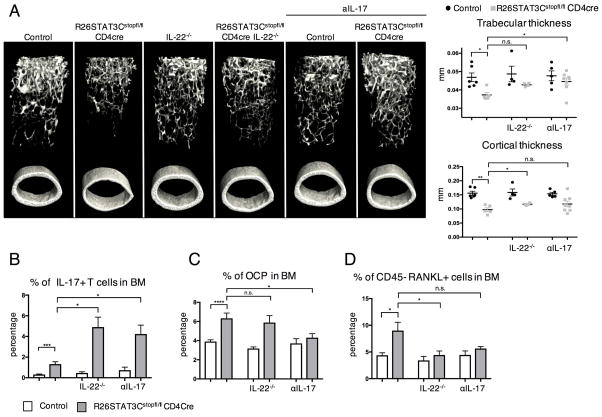Figure 5. IL-22 deficiency and αIL-17 treatment partially ameliorated the bone defects in R26STAT3Cstopfl/fl CD4Cre mice.
(A) MicroCT analysis on the femur of R26STAT3Cstopfl/fl CD4Cre mice and their littermate controls that were crossed onto IL-22−/− background or treated with αIL-17. The 3D images showing femur bones of these mice (left) with trabecular and cortical thickness of these animals quantified (right). (B) Percentage of CD3+ CD4+ cells that produce IL-17 in the bone marrow of R26STAT3Cstopfl/fl CD4Cre mice and their littermate controls that were crossed onto IL-22−/− background or treated with αIL-17. (C–D) Percentage of osteoclast progenitor cells and RANKL producers in the bone marrow of IL-22−/− and αIL-17 treated mice. Analysis was performed on mice aged between 6 to 10 weeks old. Number of independent experiments ≥ 3 for all assays. Statistical significance was assessed using the nonparametric two-tailed Mann-Whitney U test. Significance values are as follows: ns p > 0.05; ** p ≤ 0.01; *** p ≤ 0.001; **** p ≤ 0.0001.

